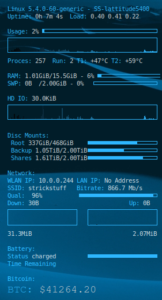DECISION SUPPORT SYSTEM
James Strickland, Student
Barry University, PACE
Decision Support Systems
Introduction
An example of a management information system (MIS) is a decision support system. Additionally, MIS can be implemented via transaction processing and operations data management approaches. For example, an MIS can improve staff communication and provide a platform for recording information about the organization’s revenue and expenditure (Marakas, 2003). Management Information Systems are comprised of computer programs that provide the management in any company with information essential to the effective running of the organization. When it comes to making decisions, decision support systems (DSS) can help managers without necessitating the presence of computer professionals. The following are the three most essential components of a DSS:
- Massive amounts of data are stored in this database management system (DBMS), which is critical in identifying solutions for problems the DSS built to address.
- Information that is critical for decision-making is processed using model-based management systems (MBMS).
- Dialog generation and management system (DGMS): provides a simple interface between the system and administrators who do not have extensive expertise in computer-based apps.
The DSS History
Due to work done at Carnegie Tech in the late 1950s and MIT on interactive computer systems, DSS has its roots in two distinct fields of study: decision theory and interactive computer systems. During the mid-1970s, scientists noticed a role that computer-based information systems (CBIS) may play in assisting managers with their decision-making processes (Power, A Brief History of Decision Support Systems, 2007). Due to the popularity of the group of executive information systems (EIS) and decision support systems (GDSS), which arose from single-user and model-oriented Decision support systems. EIS is a valuable resource for business leaders because it delivers current, actionable data that can be tracked and managed. They launched new web based DSS applications around the turn of 2000, such as online analytical processing (OLAP) and data warehousing: they began to expand the scope of DSS. The Decision support system has emerged as a significant part of the management sector due to technological improvements. The DSS has become a fundamental part of management design due to introducing new and better technologies.
Decision Support Systems
As a result of DSSs, data becomes valuable, and quality judgments are made based on it. In most cases, making good decisions is dependent on the quality of the data entered into the Software system and the user’s ability to filter the data and spot trends (Power, Decision Support Systems: Concepts and Resources for Managers, 2002). As a rule, DSS is a computer application with a human interface that can sort, process, and carry out the necessary analyses on massive amounts of data. The majority think that DSSs is a specific division of a company, but they have integrated these systems into their everyday schedule. For example, several corporations regularly download and research income and income data, projected growth, and expenditure sheets. They recharge their plans once the evaluation of the present results is finished. DSSs have a stable place in companies, but the facts and decisions are constantly evolving.
The primary goal of DSSs is to gather data, evaluate it, discover trends in the data, and then develop business decisions or recommendations based on the findings of the studies, among other things. It is not crucial whether computers, databases, or individuals engage in the process; instead, it is the practice of taking unstructured records, collecting them, and then using them to help in decision-making after being analyzed. DSS can be divided into numerous models, with categories varying from one individual to the next according to their background. When it comes to data processing, we may divide it into two categories: passive and inactive. A passive DSS merely gathers and assesses data, but an active DSS goes one step beyond and processes it. Another way of categorization that takes into account the mode of help generates five dimensions, as follows:
- Using quantitative, replication, or financial models as the foundation for their choices is what is known as a model-driven DSS;
- When individuals collaborate to create a solution or approach, this is referred to as a communication driven DSS;
- A document-driven DSS makes use of documents of various data types to make choices and develop strategic plans;
- A knowledge-driven decision-support system implements explicitly specified rules in a computer to reach a decision; and
- A data-driven DSS focuses on data acquired and then processed to meet the manager’s demands.
The Pros of DDS
There are numerous advantages connected with decision support systems, particularly when compared to prior ways of decision-making. These are detailed in greater detail below:
- DDSs improve individual efficiency: When data is gathered and processed utilizing scientific data collection and analysis methodologies, there is a significant reduction in the number of errors, collectively referred to as human errors. Using the DSS technique results, managers can make educated decisions based on the information obtained from the data analysis.
- Because automated systems carry out the processes, DSSs accelerate the pace of problem solutions in a given firm. After installing the required scientific formulas in the computer, the computer takes over the remainder of the method, resulting in a quick and efficient analytic process. Furthermore, the DSS system filters the data to make it easier to manage and, as a result, reduces the time it takes between data gathering and decision-making.
- Because the analysis process is systematic and each stage can be followed quickly, DSSs help to improve the tracking of information. During the data gathering procedure and when entering the data into the computer, one should exercise caution
- Other advantages of decision support systems include enhancing interpersonal interaction, discovering new avenues for meeting the company’s objectives, and strengthening a company’s competitive advantage.
DDS and Competitive Advantage
Some software suppliers promise that their decision support, analytics, and business intelligence products will give them a competitive advantage (Power, Decision Support Systems: Concepts and Resources for Managers, 2002). This expansive claim covers an application for decision assistance constructed with a variety of technologies. These technologies include business intelligence tools, quality management software, data mining tools, and quantitative algorithms. The vendor’s solution, it is said, will provide a competitive advantage to any firm that implements it. This comprehensive promise appears to be too good to be true, and it is also not plausible in its whole. Vendors must temper their statements with phrases like “may,” “can,” “often,” and “should.” The exaggerated optimism of vendors about technology produces excessive expectations and, in certain situations, contributes to the rise of technology pessimism. Computerized decision assistance, analytics, and business intelligence (BI) may and should be used to gain a competitive advantage.
A competitive advantage is what managers seek: a superior capacity that allows them to outperform their competitors. Better financial position, more assets, incentives, or other physical or intangible advantages are all possible outcomes of gaining an advantage. An organization with an advantage possesses a capability, resource, or expertise that is demonstrably superior to its competition. When a competitive advantage is leveraged, it can aid in the achievement of beneficial results. According to research, a sustainable competitive advantage is defined as “the sustained benefit of applying any unique real worth strategy that is not simultaneously applied by any present or possible rivals, as well as the impossibility to reproduce the benefits of this strategy.”
A durable competitive advantage is achieved when a company performs a critical function much better than its competitors (Power, A Brief History of Decision Support Systems, 2007). Generally, a competitive advantage is the competence or attribute of a company that dramatically increases the firm’s success in a market, rivalry scenario, or confrontation with another organization. When one meets three requirements, computerized decision support (DSS) can provide a competitive edge to a company. As a first step, once a decision support application has been deployed, it must be elevated to the status of a major or essential organizational strength or capacity. Second, it must be one-of-a-kind and exclusively controlled by the organization. In addition, the advantage supplied by the system must be durable for at least a few years to ensure a sufficient return on the initial investment.
Even in the face of fast technological change, a three-year payback period is a feasible aim. Keeping these three criteria in mind, managers looking to make strategic investments in information technology for decision support should look for opportunities. When computerized decision support is valuable, unique, and difficult to replicate, it can provide a significant competitive advantage. Inter-corporate DSS can help organizations strengthen their ties with consumers and suppliers. In some cases, companies can use group DSS and Groupware to overcome time and geographical limitations. Particular DSS can assist a company in operating seven days a week, twenty-four hours a day, regardless of where an employee or a client is. In some circumstances, DSS can aid in the integration of a company’s activities. Aside from that, web-based DSS that is inter-corporate can develop ties with suppliers or customers that are tough to break.
A decision support system can assist a company in achieving a price advantage (Shim, Warkentin, Courtney, & Power, 2002). DSS can give various benefits, including increased personal efficiency, reduced staff requirements, faster problem solutions, and improved corporate management and monitoring. The search for circumstances where decision processes appear to be slow or tedious, problems recur, or answers are delayed, or unsatisfactory should be the first step for managers who wish to gain a cost-cutting advantage. DSS can help cut costs when decision-makers have a high turnover rate, and training is time-consuming and inconvenient. It can also help in situations where activities, divisions, and projects are poorly governed.
By reducing or eliminating value chain tasks, DSS can save a significant amount of money. For example, a bank or mortgage lending company may save money by adopting innovative DSS to cut the number of stages and lower the number of employee hours required to approve loans. Some technological advancements may continue to cut process costs, while competitors who mimic an innovative DSS may erase or cancel any advantage. It is possible to get a competitive advantage by using DSS. A DSS can set your product apart from the competition and perhaps open the door to new revenue streams. To maximize profitability: differentiated products must charge a price premium that exceeds any additional expenses to attain the differentiation.
Differentiation can lead to higher pricing, more units sold, or increased customer loyalty for service and recurrent purchases if the company succeeds. It’s possible for competitors to quickly copy the differentiation, resulting in greater costs for all of them. Computerized decision assistance can also help a corporation better target a certain consumer segment and gain an edge in satisfying the needs of that group (Mitran, 2019). DSS can make it a lot easier to serve a specific group of clients with a specific set of services. For some clients, personalized service isn’t worth the extra cost; for others, larger competitors have their DSS to target niches. Improving existing resources and building new resources and capabilities in adapting to variations in market conditions is the key to long-term competitive advantage. Developing a competitive edge that results in superior value generation sometimes necessitates the renewal, creation, and creation of decision support systems.
Cons of DSS
- User-friendliness reduced. Even though DSSs have been simplified in recent years, some firms, especially those with limited resources, still find it difficult to adopt them, even if it has been easier to do so. Small businesses that cannot afford the installation and training charges will have to rely on more traditional means of decision-making.
- It’s difficult to measure. If the decision-makers don’t know how to combine their output, the entire process is a waste of time and effort. Most decision support systems generate mathematical results and need mathematical computations to determine the sort of decision that should be taken.
Effectiveness of DSS
It is possible to support semi-structured and unstructured decision-making by using a Decision Support System (DSS), an information system at the company’s management level. It is possible to use a DSS to analyze low-volume databases, and enormous databases specialized for data mining. The DSS is more powerful than any other system out there. Several models are used to analyze data, or vast amounts of data are compressed into a form that decision-makers can understand. User-friendly DSS is designed to be used by the end-user. When data is gathered and processed utilizing scientific data collection and analysis methodologies, there is a significant reduction in errors, collectively referred to as human errors. Using the DSS technique results, managers can make educated decisions based on the information obtained from the data analysis.
Many new tools and advancements are presently in development for the DSS platform, which will have a major impact on the way businesses make decisions. Artificial Intelligence systems, OLAP, and internet analysis gadgets are just some of the new tools that have been developed in the last several years. Overall, decision assistance systems have a promising future (Shim, Warkentin, Courtney, & Power, 2002). All firms will adopt DSSs in the future; hence any company that doesn’t is doomed to fail. A company can’t have a competitive advantage if it only observes its competitors enjoy massive growth margins. However, the competition has already begun, so we don’t have to rely on future inventions to grow.
As previously stated, the use of DSS methods provides several advantages. With DSS, a company’s costs can be decreased because the automated systems will conduct most of the job, requiring fewer employees. The manager will also be able to make even the most critical decisions thanks to real-time analysis. The decision to use a decision support system is good, considering the technology’s upsides and downsides.
Works Cited
Marakas, G. M. (2003). Decision Support Systems in the 21st Century (Vol 134). Upper Saddle River, NJ: Prentice Hall.
Mitran, D. (2019). Decision Support Systems to Create a Competitive Advantage. Internal Auditing and Risk Magement, 76-82.
Power, D. J. (2002). Decision Support Systems: Concepts and Resources for Managers. Greenwood Publishing Group.
Power, D. J. (2007, 03 21). A Brief History of Decision Support Systems. Retrieved from dssresources.com: https://dssresources.com/history/dsshistory.html
Power, D. J. (2007, 05 10). Ask Dan! About DSS. Retrieved from Decision Support System Resources: https://dssresources.com/faq/index.php?action=artikel&id=84
Shim, J. P., Warkentin, M., Courtney, J. F., & Power, D. J. (2002). Past, Present, and Future of Decision Support Technology. ResearchGate, 111-126.




